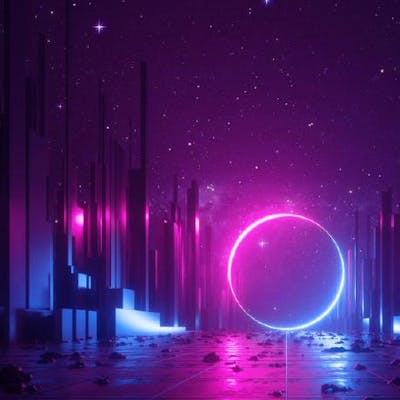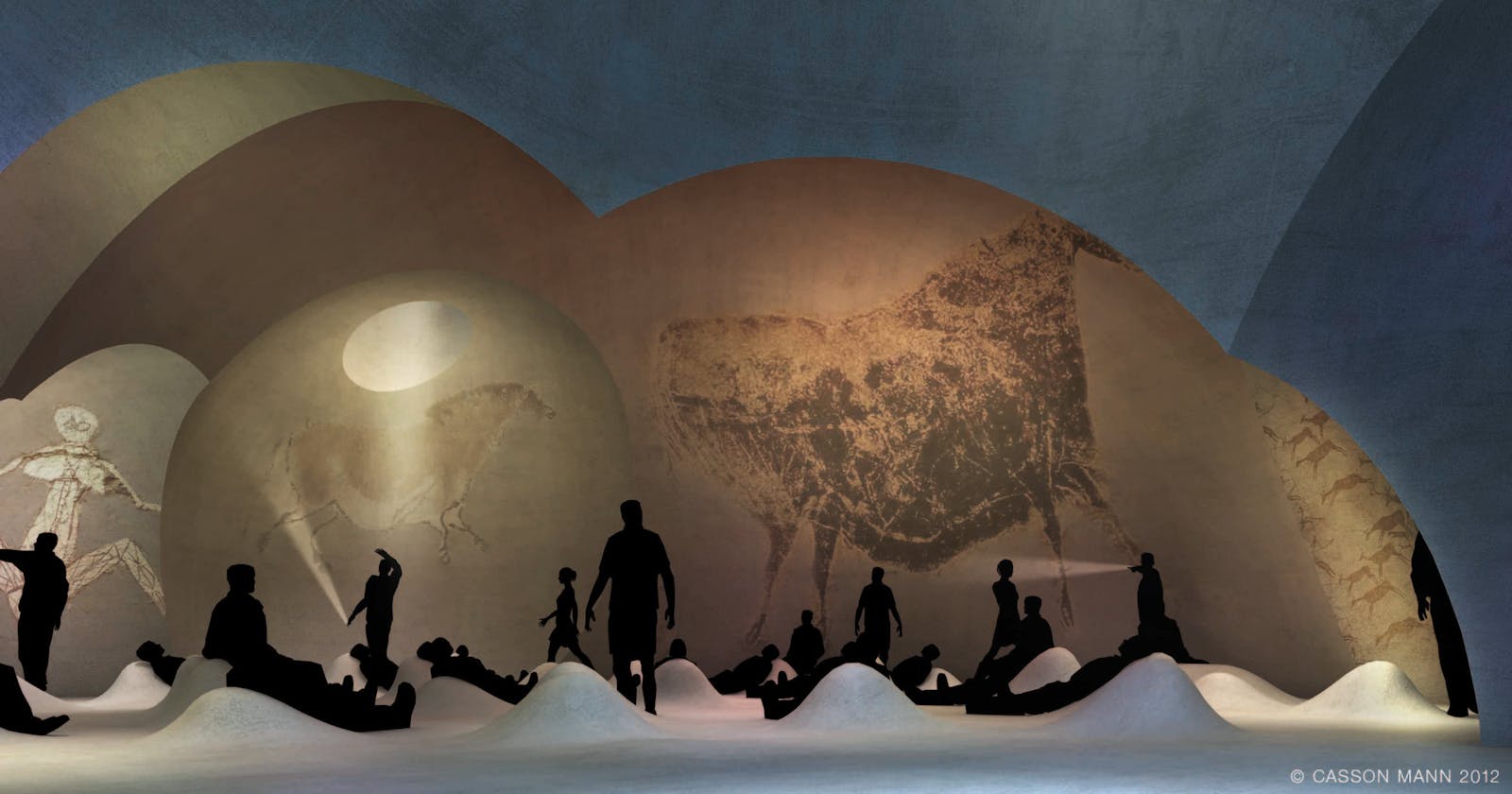From Cave Arts to the Immersive Worlds: How technology transformed human visualization into reality?
Blockchain is leveraging Metaverse by disrupting the entire rendering industry
Introduction
As far back as we can trace our ancestry, we've been trying to use art to convey our innermost feelings and thoughts to the world. We have been using a wide variety of tools, ranging from parietal arts to primitive 3D modeling softwares, 3D animation, 3D printers, holograms, and VR equipment, to be able to visualize any idea before it is actually built.
The metaverse, the pinnacle of visualization, is now emerging. People who are new to the concept would assume that it is simply another virtual world that can be accessed by means of VR goggles. The metaverse is more than just a collection of VR environments. Instead, it is a collaborative and ever-present digital environment that enhances the tangible one.
In the metaverse, you wouldn't be just a device asking distant servers for data. Users of the metaverse can utilize digital avatars to access online content and virtual environments allowing them to feel, experience, participate, interact, socialize and own every digital asset inside it. As a user's avatar, which exists in the metaverse, they are able to take part in a wide variety of activities. In reality, the metaverse would function as an expansive, cooperative virtual world in which users face no limitations.
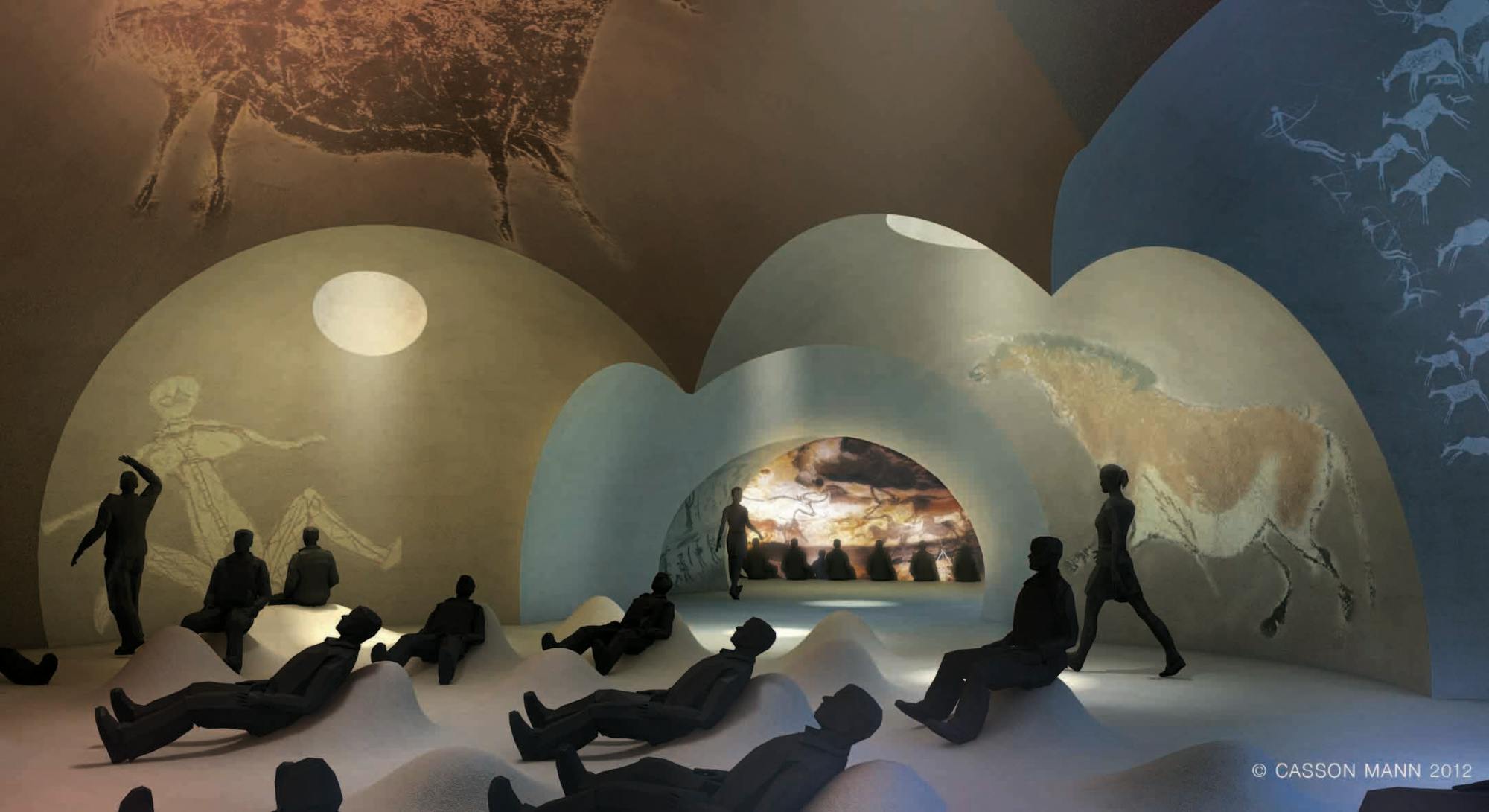
Because of this, there is a dramatic rise in the need for heavy processing power to render the metaverse in real time. Let's start with a high-level overview of the graphics processing pipeline before diving into the specifics of how the render network company found a revolutionary solution to rendering by leveraging the blockchain technology.
Graphics Processing Units
Graphics processing units (GPUs) are specialized electronic circuits whose sole purpose is to rapidly generate images in a frame buffer for output to a display device by manipulating and altering memory. With GPU technology evolving rapidly and new GPUs appearing on the market nearly every year, it can be prohibitively expensive and impractical for businesses to always be at the cutting edge.

Cloud GPUs
The emergence of cloud GPUs marked the beginning of a new era in computing, one in which heavy tasks could be executed on a remote server without the need for installing a dedicated graphics processing unit (GPU) on each individual device. Now that rendering can be done securely from a distance, it is no longer restricted to being done in a dedicated facility.
OctaneRender® was the world’s first and fastest unbiased, spectrally correct GPU render engine, delivering quality and speed unrivaled by any production renderer on the market. Its founding company OTOY® was proud to advance state of the art graphics technologies with groundbreaking machine learning optimizations, out-of-core geometry support, massive 10-100x speed gains in the scene graph, and RTX raytracing GPU hardware acceleration.
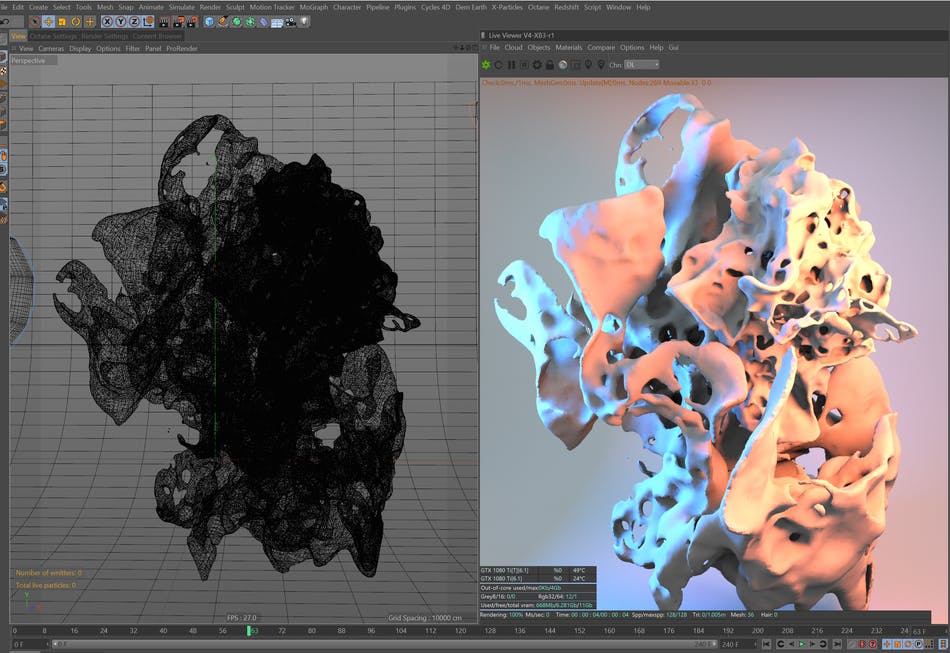
Although Octane was a very special GPU software and it has no limit to the amount of compute power and render power that it can throw behind a rendered job but scaling GPU rendering power became too difficult. Rendering locally on the network and even in the cloud just hit a wall.
It became impossible to leverage all of the GPUs in the world efficiently without some sort of decentralized system that allows that to be tracked and managed. This is the point where decentralized technology changed the game. Blockchain technology extends far beyond the realm of cryptocurrency like bitcoin.
Decentralized GPUs
The render token, developed by OTOY, is an ERC 20 token built on the Ethereum network. Render tokens can be earned by contributing to render jobs and then cashed in for a variety of rewards.
Through this system, the authorship and chain of title of any renders or content created by any user is permanently recorded on the blockchain. They plan to distribute a peer-to-peer network with unlimited rendering power, as well as a marketplace where users can sell and buy services, assets, and even modules developed on the rendering network. Nothing will be rendered using the render token that doesn't have some sort of creative or artistic motivation behind it.
So blockchain technology offers alternative approaches to the main problem of artists and content creators when their graphics processing units (GPUs) sit idle when they aren't rendering their own conten. Render is a marketplace that seeks to unite mining partners who are willing to rent out their gpu capabilities with artists and studios in need of gpu compute power. A platform that offers distributed graphics processing unit-based rendering solutions.
To save time and money, users don't have to invest in high-end computers specifically designed for rendering, so this service connects those users looking to outsource their rendering needs with those who have idle GPUs.
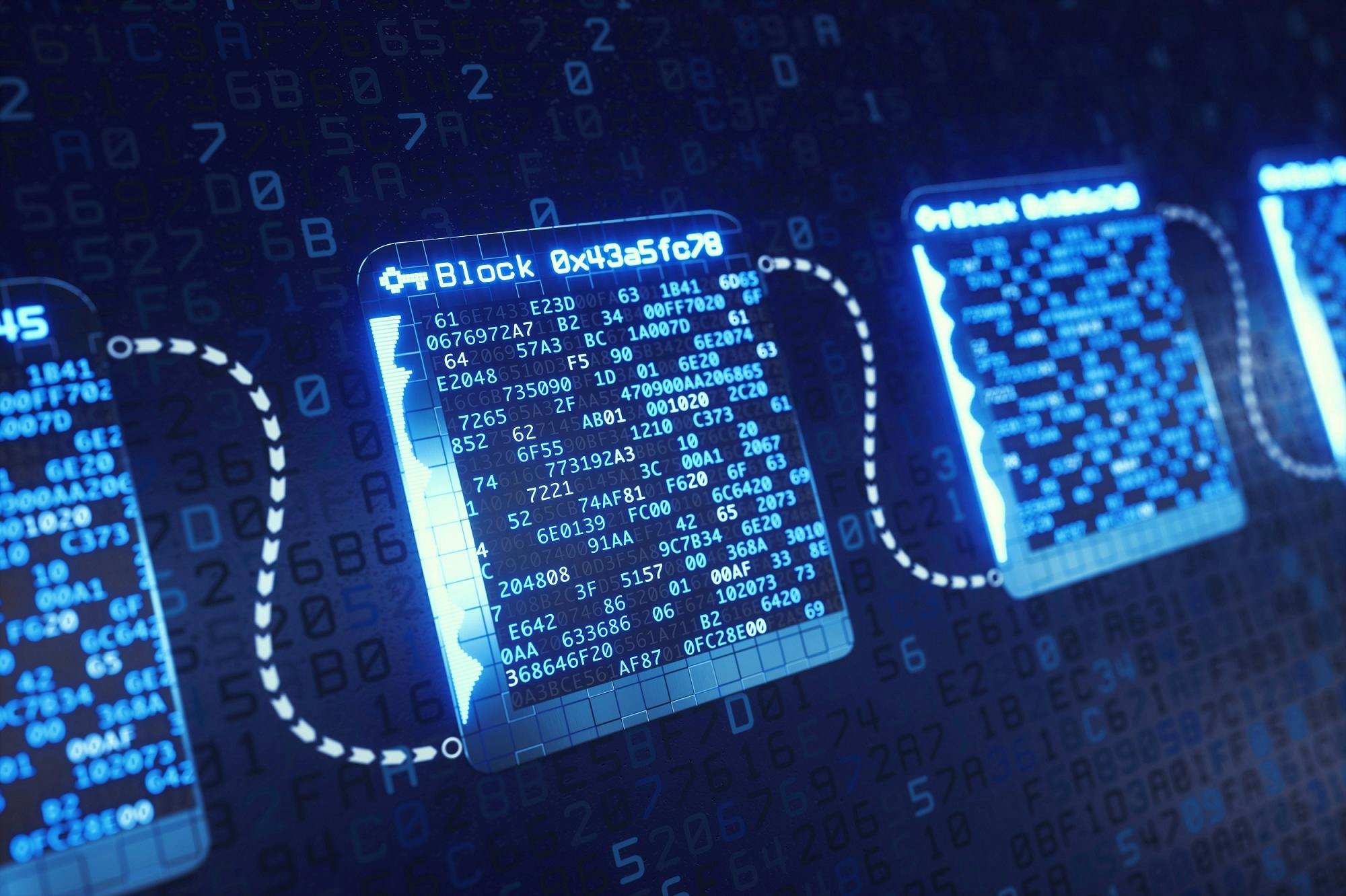
There are six actions required to use the render network:
Creating a job: Creators must submit their job in ORBX file format using OctaneRender or a supported plugin/integration, and define key parameters such as graphic resolution, output format, and sample size. Creators can also select which service tier they want based on their job’s priority level and Node Operators’ on-chain performance benchmarks and reputation scores.
Uploading a job: Once a job is uploaded through Render’s OctaneRender web portal, the Creator’s assets are split into individual files that are then encrypted and hashed, which provides end-to-end traceability and makes it easier for the Render crypto protocol to detect and prevent malicious behavior. The job requirements and payment terms are then sent to a smart contract that broadcasts the relevant details across the Render Network.
Assigning a job: Render’s MTP protocol automatically assigns Node Operators to suitable jobs based on each market participant’s reputation scores and the Creators’ specifications. Upon joining the network, Render will automatically assess a Node Operator’s performance capabilities and incorporate this information in its node benchmarking and assignment process.
Completing a job: Node Operators use OctaneRender to process each assigned job, thereby providing Proof of Render work through their computational tasks. Node Operators’ contributions are tied to their unique OctaneRender identifier, and job submission and scoring are also completed via OctaneRender.
Verifying deliverables: Creators can watch their Node Operators’ render progress in real time and flag processing abnormalities or maligned behavior prior to job completion. These previews are watermarked until a job is confirmed, and a Creator pays for work completed. Additionally, Node Operators’ outputs are encrypted.
Completing Payment: All Render payments are held in escrow during a rendering job, and the RNDR tokens are released to Node Operators once a Creator manually verifies that their job has been satisfactorily completed. Render Network receives a small percentage of RNDR tokens for facilitating the transaction and running the Render Network, which ranges from 0.5–5% of the total RNDR needed to process the job, based on the current GPU supply and demand levels. From there, Creators can download or share their rendered assets directly on OctaneRender.
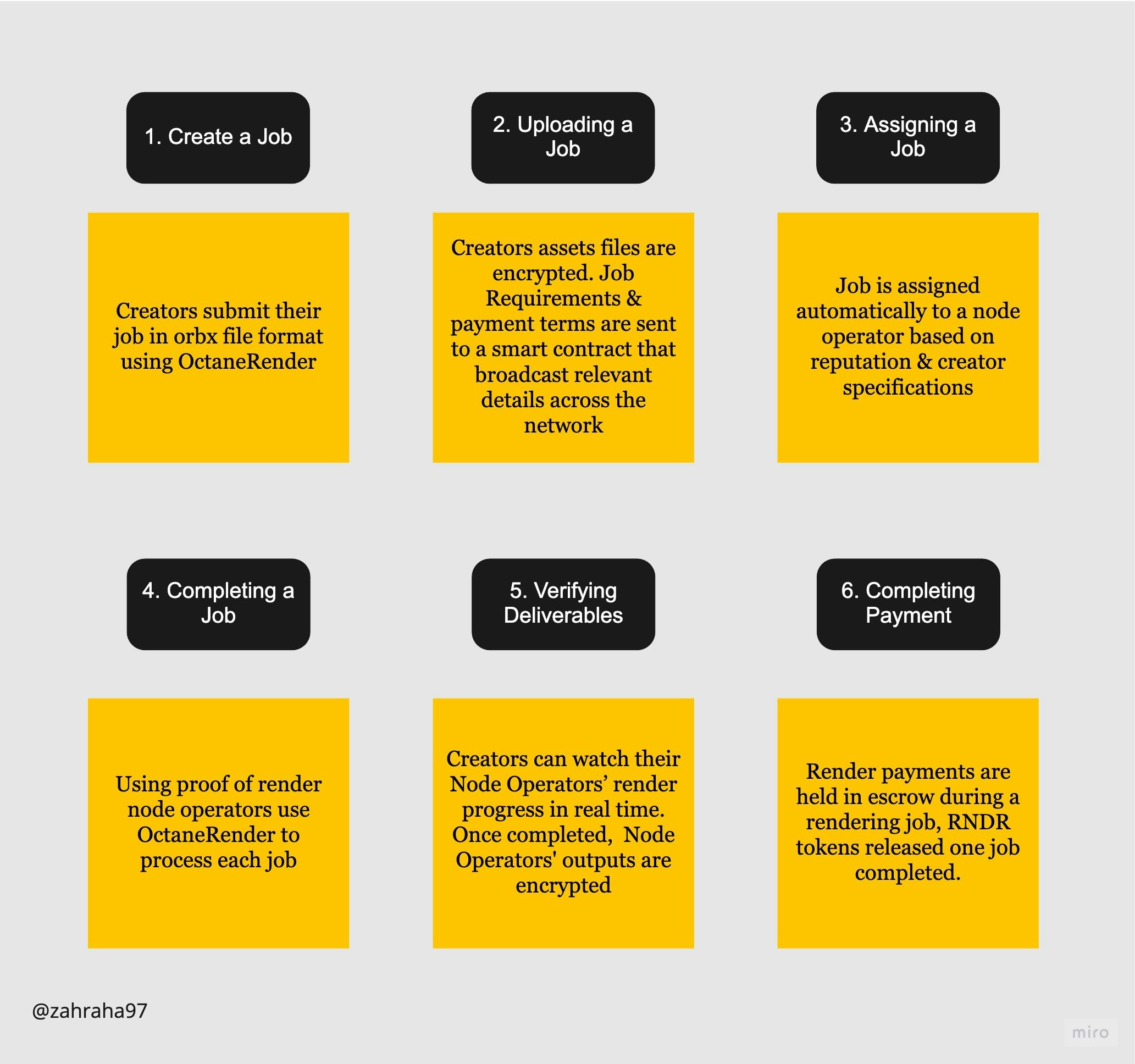
Proof of Render
In classic blockchain: Node operators are responsible for running the network software.
In render: Node operators are users with idle resources.
There is a reputation scores system generated in the network creators and node operators both have this feature in a way that:
Creators with a higher reputation score will have access to more nodes
Node Operators with better reputation scores will get jobs assigned faster
Participants in the render network:
Node Operators: Provides computing power to perform the render jobs and are paid by the network in RNDR tokens.
Creators: Final users of the network people in need of computing power to perform render jobs which is achieved by connecting to a web interface linking a wallet and selecting the job preferences.
Dual Operators who are the users that play the role of node operator and creators usually sell to the network idle gpu power when not using their hardware to accumulate RNDR that can be used when in need of extra computing power to run a job.
Investment in RNDR token:
RNDR is an ERC20 token that's native to the render network it belongs to the category known as utility tokens which allow holders to pay for services on a network.
In just the last two years, utility tokens have undergone a radical transformation. The extreme volatility of the cryptocurrency market necessitates extensive investigation into which tokens have the greatest potential for growth and consequently the highest potential for financial gain.
Faraway from mining RNDR tokens, many early investors in RNDR tokens saw massive returns on their initial capital. RNDR token was a fantastic example of how investing in the right tokens could reward us, increasing in value from $0.053 to $8 in a year. It's possible to achieve the financial independence we seek through careful planning and investigation of various investment opportunities.
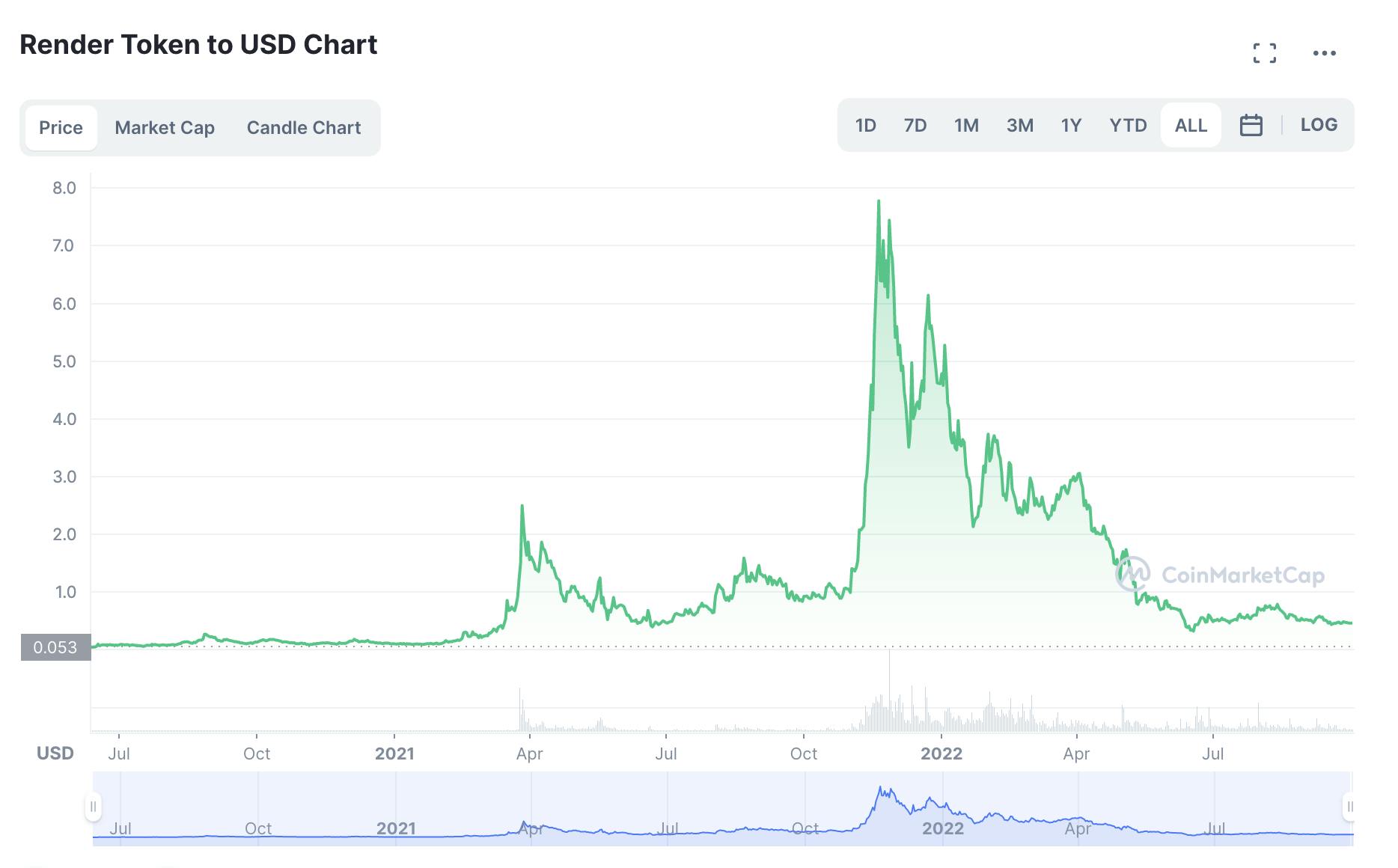
References
History of communication easyrender.com/a/a-brief-history-of-3d-visu..
What is RNDR- Render Token Explained #RNDR youtube.com/watch?v=oiN7tDS60Dk
GPUs Explained youtube.com/watch?v=LfdK-v0SbGI
What are cloud GPUs? youtube.com/watch?v=YPNJBe0SOMQ
About OctaneRender® home.otoy.com/render/octane-render
Introducing the Render Token vimeo.com/231572056?embedded=true&sourc..
How to Mine RNDR Token youtube.com/watch?v=9C-qqIAHoGY
Steps for paticipating in render network gemini.com/cryptopedia/render-network-3d-re..
Token Stats coinmarketcap.com/currencies/render-token
